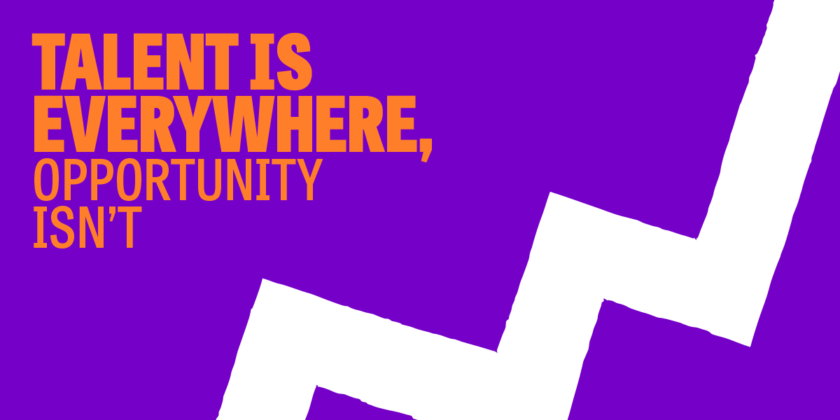“Talent is everywhere opportunity isn’t.”
This was the key message in Lord Chris Holmes speech at last week’s HR Summit in Barcelona. Lord Holmes is campaigning for equality of opportunity and inclusivity, something I personally feel passionate about and encourage the clients we work with to embrace, as this is truly what separates the good from the great employee experiences!
Put simply a healthy organisational culture is from where inclusivity stems. A workplace where everyone can thrive. Although talent is everywhere – not everyone is getting the opportunity to reach their full potential. We still put people into boxes according to what we deem to be their potential and we make assumptions.
Should we not stop this old world thinking and look at ways of opening up the dialogue with managers and employees so we re frame to answer the question ‘potential for what’?! I believe that everyone has potential. It is the speed at which organisations develop someone that should be the question we are trying to answer not whether you have it or not.
Should we not stop this old world thinking and look at ways of opening up the dialogue with managers and employees so we re frame to answer the question ‘potential for what’?! I believe that everyone has potential. It is the speed at which organisations develop someone that should be the question we are trying to answer not whether you have it or not.
Since coming back from the HR Summit and talking to prospective clients about their challenges in both talent management and OD, I have taken some time to reflect and wanted to share with you some of the common threads.
- Succession management
Organisations are throwing out the rule book and thankfully looking for alternatives to the nine-box grid. There’s a call for simple, robust, actionable succession strategies that the business and line managers can get behind. Succession should be more of a conversation about risks and opportunities than a process. We’re helping organisations with succession strategies where succession is openly talked about in the business and where succession plans aren’t restricted to identifying one person per role.
- HR Strategy
In these discussions I really encouraged people to think about how they can apply more user-centric design thinking in their HR approaches. In short, there’s no point creating an HR strategy if it doesn’t talk to your audience. HR strategy starts with building a compelling vision for the people agenda and finding ways to bring colleagues along with you. Being able to articulate the plan to your audience and get them on board is as important as the plan itself.
- Onboarding
Conversations I have about the overall employee experience seem to hit a bump around onboarding. Companies have invested significantly in pre-hire processes like attraction and recruitment and in employee experiences like engagement and development. Businesses now need to make sure that onboarding isn’t the weak link and we’re working with organisations to engage with new joiners in innovative ways. We’re also helping them ensure that the journey that begins with the first pre-hire engagement has a thread that runs through the entire employee lifecycle.
Your North Star
The end goal is to create an inclusive culture with opportunities for all. In all of these examples, the first steps on that journey are determined by how well you can articulate the story simply to your stakeholders.
When I talk to clients about their culture I talk about defining their North Star. The North Star is comprised of two elements: the ability to get great people and the ability to keep them. By linking your people and your business strategy towards this star, achieving large-scale changes like cultural transformation become much simpler.
When I talk to clients about their culture I talk about defining their North Star. The North Star is comprised of two elements: the ability to get great people and the ability to keep them. By linking your people and your business strategy towards this star, achieving large-scale changes like cultural transformation become much simpler.
The Let’s Talk Talent’s Vision Triangle Model shows you how to:
- Set out your big question – what do you want to achieve?
- Identify the building blocks to help answer the question
- Allocate workstreams to support the building blocks
If you’d like to find out more about the Let’s Talk Talent’s Vision Triangle Model, please get in touch. I find it invaluable in helping HR leaders clarify their thinking.
In conclusion lets throw away the HR rule book and look at ways of embracing the different cultures, voices and perspectives that exist in our businesses. Only then do you create experiences, which go beyond the tactical and touch people’s hearts.
To find out more about how Let’s Talk Talent approaches talent, OD and cultural change, contact us now.
Lets throw away the HR rule book and look at ways of embracing the different cultures, voices and perspectives that exist in our businesses. Only then do you create experiences and touch people’s hearts.
